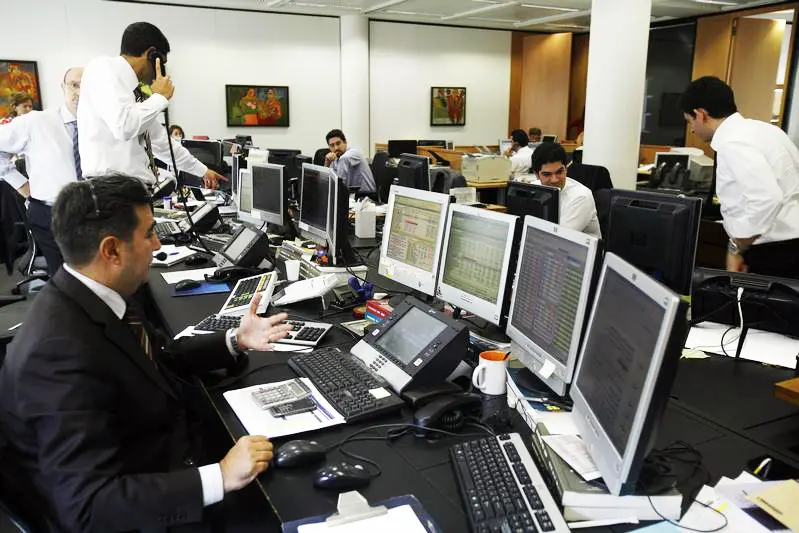PHOTO
Quarter one shows high earnings, but with room for improvement
At a time when the observation of global banking remains as interesting as ever, the first quarter of 2015 has seen Lebanese banks stay their course, at least as far as growth of profits of the country's six publicly listed banks, which between them reported over $279 million in net profits for the period that ended March 31, 2015.
Leader in unaudited Q1 profits was Bank Audi whose round $100 million figure put Blom Bank's $91.2 million into second place. Audi claimed not only the top share of almost 36 percent in the group's cumulative net income, but also led the pack in terms of profit growth at 17 percent when compared with the first quarter in 2014.
Audi and Blom, Lebanon's top banking pair, accounted for $191.2 million in net profits, or nearly 70 percent of the reported cumulative amount. Each bank's results exceeded the combined profits of the other four reporting banks, which together achieved $88 million during Q1.
Quarterly reporting, a standard behavior in responsible banking operations, is to date not an established practice by commercial banks in Lebanon. Only the six banks with listed shares on the Beirut Stock Exchange have been publishing quarterly financial updates for the past few years. The vast majority of banks, including most of the 28 institutes in the top tier (alpha and beta groups) that represent over 90 percent of the Lebanese banking market in terms of deposits, have so far not adopted the quarterly reporting habit, thereby limiting the information value on economic health that the publication of banking sector results can provide to the public.
Profit growth rates at listed banks stretched from Audi's 17 percent to 2.49 percent at BLC Bank. The combined results of the six banks improved 9.6 percent year on year, said the Credit Libanais Economic Research Unit in a compilation of results.
Divergence drives profits
Drilling into the next layer of information, the six banks showed continued divergences in terms of where they generated their profits. In the split between interest and non-interest sources of profits, net interest incomes' contributions to total operating incomes were crucial quarterly profit drivers at Bank of Beirut (BoB) and Byblos, but this growth was juxtaposed with contractions in net fees and commissions incomes at either bank.
BoB's 16.5 percent growth in net interest income was opposed by a 6.9 percent contraction in net fees and commissions income; the respective year-on-year changes at Byblos were 12.8 percent up on net interest income and 13.1 percent down on net fees and commissions income. At 18.1 percent BEMO reported particularly strong growth in its net fees and commissions income and a minor expansion of 3 percent in its net interest income. BLC achieved 5.1 percent growth in net fees and commissions income, but inversely to the other reporting banks showed a 5 percent contraction in net interest income.
On the P&L sheets of Blom and Audi, net interest incomes and net fees and commissions incomes both improved, and the growth in the former at both banks outpaced the latter. The numbers are 6.2 percent and 3.5 percent for Blom, and 18.6 percent and 13.7 percent for Audi.
When it comes to first quarter net gains on financial instruments as contributors to total operating income, quarterly performance numbers represented year-on-year improvements of 25.2 percent at Audi, 22.1 percent at Bank of Beirut, and 6 percent at Byblos, but a 16.9 percent contraction at Blom.
In the assessment of the $14.2 million jump in Audi group's profits, constituting about 58 percent of the combined profit growth of the six listed banks, the bank pointed to consolidation of its positioning in the three main countries where it is present: Lebanon, Turkey and Egypt. More distinctly, the bank noted that 52 percent of its Q1 profits were generated by "entities outside Lebanon."
As analysts tracking the bank at FFA Private Bank clarified in a research note, "Bank Audi's Q1/15 financials still show a significant increase in revenues (+ 19 percent) translating into stronger net profits (+17 percent), driven by the positive contribution of Odeabank to consolidated results vs. losses in Q1/14." Whereas Odeabank, Audi's Turkish unit, was still slightly in the debit column in Q1 2014, it reported $11 million in net profits for Q1 2015.
FFA pointed to currency pressures in Egypt (Blom and Audi) and Turkey (Audi) as negative factors weighing on these banks' consolidated balance sheets, in addition to a quarter-on-quarter "tepid performance" at Blom for assets, deposits and loans. With Byblos, the analysts described balance sheet developments as disappointing for the second consecutive quarter and, as with Blom, cited subdued growth in the domestic banking sector as the likely culprit.
With regard to the operating environment for the Lebanese banking sector, the FFA research notes said that for each of the top three Lebanese banks under coverage the prevailing low interest rate environment in the country limits both the banks' potential to improve yields on earning assets and their capability to reduce costs of funds.
Room for improvement
According to the central bank, the consolidated balance sheet of commercial banks in Lebanon edged up 0.7 percent from yearend 2014, to $177 billion at the end of March. Private sector deposits reached $145.5 billion, likewise representing a 0.7 percent expansion. Loans to the private sector saw an even lower rate of increase of 0.5 percent and stood at $51.1 billion at the end of March.
According to Byblos Research this QoQ lending growth rate was by far the lowest for any first quarter since 2010. Bank Audi's research team opined that within the banking sector's "modest" activity growth in the first quarter, its deposit growth remained favorable because it was better than in the same quarter of 2014, but also took note that lending was "quite weak."
This, albeit somewhat grudging, attention to short-term reality deserves to be correlated with the latest opinion and advice which the International Monetary Fund offered to Lebanon in the 2015 Article IV Mission's concluding statement, published after the IMF staff visit last month. While the statement acknowledged the country's historic ability to attract sizable deposit inflows, which have in turn helped fund large budget and current account deficits, the Mission cautioned that the growth rates of deposits is slowing. It advised that Lebanon needs a decisive change in policies and an overall more balanced policy mix in order to strengthen confidence. "Lebanon's economic model rests on confidence," the Mission said, in a statement dripping with more or less veiled appeals for urgent action on long-known problems.
When taking in the larger picture of first quarter banking numbers around the pretty patch of flowering profits at the six reporting banks, the pale developments of sector assets, deposits and loans, in combination with the diplomatically screaming advices of global multilateral institutions, should perhaps be reason for financial policy makers in Parliament to don those thinking caps. But one suspects they will not make haste.
In the meantime, several top banks have announced how they will take care of their shareholder needs through dividends. For the top three banks, total gross dividends for 2014 amounted to $190.1 million at Audi, $153.6 million at Blom and $107.2 million at Byblos as approved by the respective general assemblies in April and May. According to calculations by Byblos Bank's economic research department, gross dividend yields on common shares were 3.2 percent at Bank of Beirut, 5.1 percent at BLC, 6.7 percent at Audi, 7.5 percent at Blom and 8.3 percent at Byblos itself.
Thomas SchellenThomas Schellen is Executive's editor-at-large. He has been covering Middle Eastern markets and business for nearly two decades.
© Executive 2015












